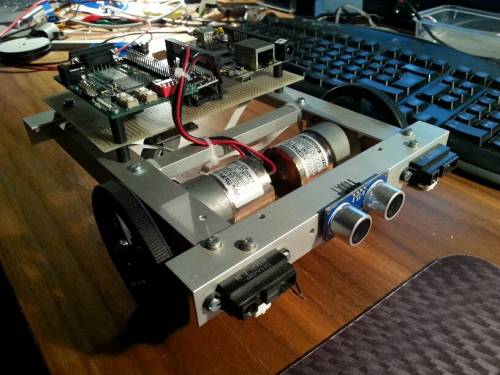Robot "Alubot"
Robot "Alubot"
Introduction
The intention for building this robot was to have a flexible platform for all kind of experiments with different technologies like mechanics, microcontrollers, looped feedback controls, embedded systems, FPGAs etc. As the building material I choose aluminum which is cheap, very strong for its weight and easy to handle at home even without a proper workshop. The preliminary picture below shows the current state of the robot:
Milestones
As of now the robot is a constant work in progress. In order to have some goals to work towards, I defined some milestones for the development:
- Build an aluminium frame with enough space for a strong battery pack, one or two carrier PCBs, two or three embedded systems and several sensors. Also two strong motors with wheels and one pivoted support wheel should be included
- Next step is to choose and install a battery with a fuse and a main switch as well as a mini Linux computer which will bring a lot of computing power to play with.
- In order to bring things to life, a motor driver board that can communicate with the Linux system is needed. Ideally, this board is programmable with an open source tool chain which make things easy to develop on a Kubuntu desktop PC. To control the motors through the embedded Linux system, basic communication and control routines are needed.
- Next step is to install wheel encoders and get them to work with the motor driver. This can be used for looped feedback control of the motor´s speed which will allow accurate control of speed and direction of the robot.
- Another plan is to use a common TV remote control to directly control the robot in the field and e.g. override driving controls or choose between different behaviours.
Work In Progress
